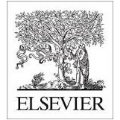In this paper, we propose LGG, a neurologically inspired graph neural network, to learn local-global-graph representations from Electroencephalography (EEG) for a Brain-Computer Interface (BCI). A temporal convolutional layer with multi-scale 1D convolutional kernels and kernel-level attention fusion is proposed to learn the temporal dynamics of EEG. Inspired by neurological knowledge of cognitive processes in the brain, we propose local and global graph-filtering layers to learn the brain activities within and between different functional areas of the brain to model the complex relations among them during the cognitive processes. Under the robust nested cross-validation settings, the proposed method is evaluated on the publicly available dataset DEAP, and the classification performance is compared with state-of-the-art methods, such as FBFgMDM, FBTSC, Unsupervised learning, DeepConvNet, ShallowConvNet, EEGNet, and TSception. The results show that the proposed method outperforms all these state-of-the-art methods, and the improvements are statistically significant (p<0.05) in most cases. The source code can be found at: https://github.com/yi-ding-cs/LGG
翻译:在本文中,我们提议LGG, 这是一种神经学启发的图形神经神经网络, 以学习大脑- 计算机界面( BCI ) 的电脑光学( EEEG) 的局部全球分布图示。 提议采用一个具有多级 1D 进化内核和内核注意聚合的时进层, 以学习 EEEG 的时间动态。 在大脑认知过程的神经学知识的启发下, 我们提议采用本地和全球的图形过滤层, 学习大脑不同功能领域内部和之间的大脑活动, 以模拟它们之间在认知过程中的复杂关系。 在稳健固的嵌套交叉校验设置下, 在可公开获取的数据集DEAP 上评价拟议的方法, 分类性能与最新方法进行比较, 如FBFFBGMMM、FBTSC、无监督的学习、 Deep ConvNet、Shalow ConvNet、EGEGNet Net 和TSeption 。 结果显示, 拟议的方法超越了所有这些状态- 艺术方法的复杂关系。 在最显著的源/ GAGIGUT 例中发现。


